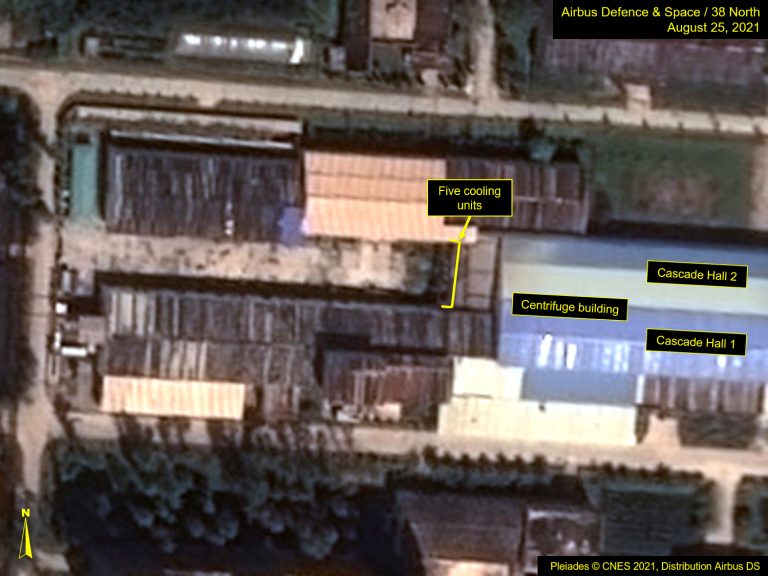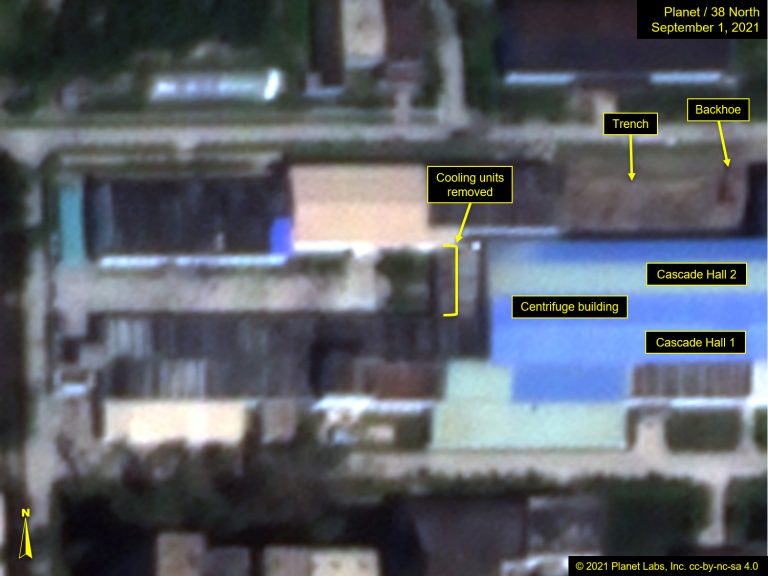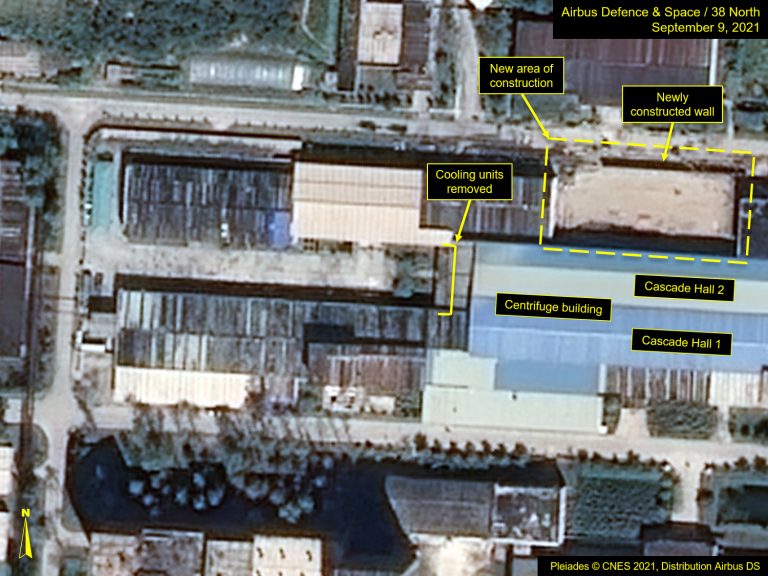Yongbyon Nuclear Research Center’s UEP May Not Be Operating
Recent commercial satellite imagery of North Korea’s Yongbyon Nuclear Scientific Research Center indicates the cooling units on the annex rooftop next to the cascade halls at the Uranium Enrichment Plant (UEP) were removed between August 25 and September 1. As proper air conditioning and system cooling is essential to the uranium enrichment process—including maintaining a consistent temperature inside the cascade halls—it is unlikely that the UEP is currently operating if no other means for cooling is in place. It remains to be seen if the cooling units will be replaced or relocated. Additionally, new construction has started in an area just north of Cascade Hall #2, where a wall was constructed between September 1 and September 9. Excavations then started between September 9 and September 14 at the eastern end of this area as reported by CNN, but the purpose of this activity is not yet evident.
Figure 1. Cooling units removed since August 25, 2021.
Cooling Unit Activity at the UEP
The cooling capacity of the centrifuge hall at the UEP has been a focus of and an issue with North Korea’s enrichment program since 2014, when three cooling units were upgraded to support the functioning of Cascade Hall #2. In 2020, one cooling unit was permanently removed that was associated with the first cascade hall.
Imagery from August and September 2021 show that the five remaining cooling units were removed sometime between August 25 and September 1, reported in IAEA Director General Rafael Grossi’s remarks to the IAEA Board of Governors on September 13.
The purpose of the units’ removal is unclear. It may be part of efforts to make future improvements to the cooling system. The initial set of three cooling units for Cascade Hall #2 had originally been placed too close to the building and had to be replaced, as they caused condensation problems as reflected by frost and stains on the cascade hall roof. That original set was replaced in 2014, but only after another newer set had been installed and readied next to the set serving Cascade Hall #1. The installation was apparently done in such a way as to prevent any interruption to the then-ongoing centrifuge operations. Alternatively, that particular type of cooling system could have simply reached the end of its service life. The life expectancy of such cooling systems is typically 15 to 20 years, but irregular maintenance, extreme weather conditions and electricity inconsistencies can all reduce that life span.
If North Korea is indeed in the process of replacing the cooling units for a system better-suited for the plant’s operational functionality (assuming an alternative means of cooling is not already in place), it has likely paused uranium enrichment activities until that system upgrade is complete.



